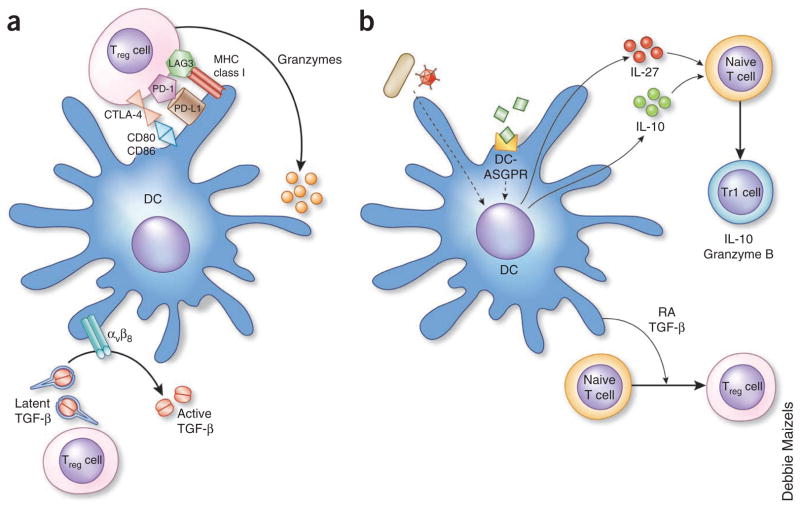Figure 1.
The dialog between Treg cells and DCs. (a) Treg cells can inhibit the priming of effector T cells by preventing DC maturation through cell surface signaling by CTLA-4, PD-1 or LAG3 or by killing DCs through the secretion of granzymeps. After being stimulated by DCs, T cells can secrete latent TGF-β, which is activated by αVβ8 expressed on the surface of DCs. The activated TGF-β can now signal DCs and other cell types. (b) DCs can induce the differentiation of Treg cells. DCs activated by microbes or by ligation of certain surface molecules such as DC asialoglycoprotein receptor (DC-ASGPR) secrete either IL-27 or IL-10, which induce T cells to produce IL-10 (Tr1 cell). A subset of DCs secrete retinoic acid (RA) and TGF-β, which induce the differentiation of T cells into Treg cells. MHC, major histocompatibility complex.

